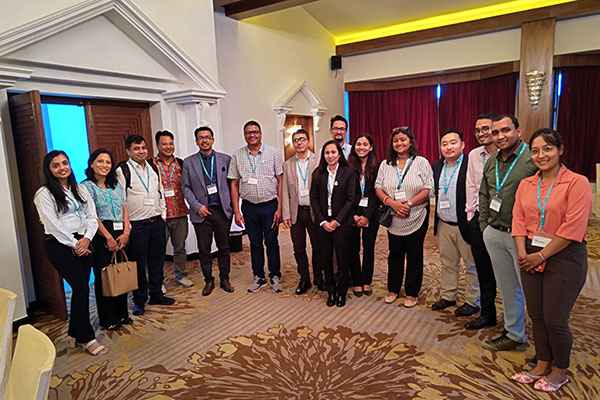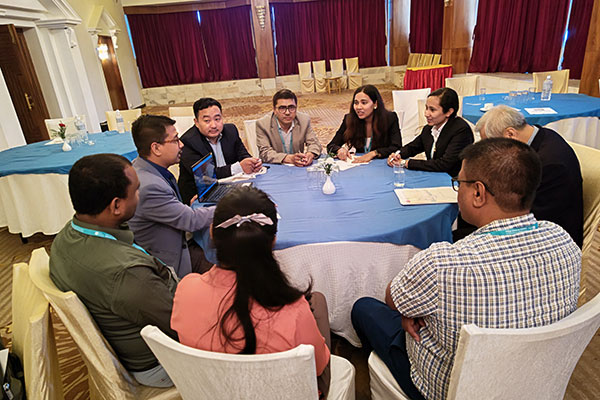Events
Nepal Alumni Use and Apply Practical Knowledge Gained through SSP
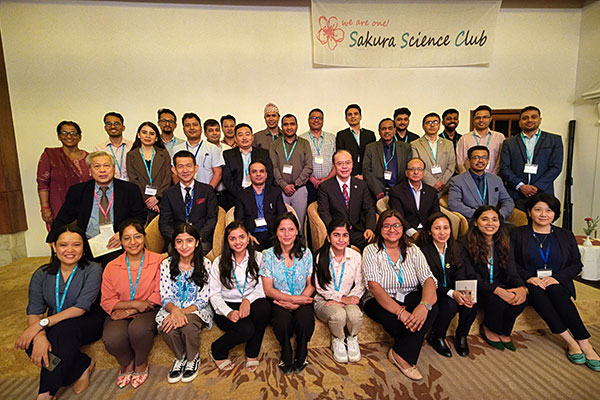
On September 2, 2023, Sakura Science Club Nepal (SSCN) enjoyed their first in-person alumni meeting, “Coming Together with the Sakura & Japan Experiences”, at Hotel Himalaya in Kathmandu. It was a cozy gathering where alumni and guests could talk and interact closely with each other. SSCN president Mr. Suman Dhun Shrestha opened the meeting with the story of how he co-founded the association with 11 other coordinators and the guidance and support of SSC contacts in Japan and the Embassy of Japan in Nepal. One of the 11 coordinators, Ms. Pabitra Bhandari moderated the event. The event video can be viewed here.
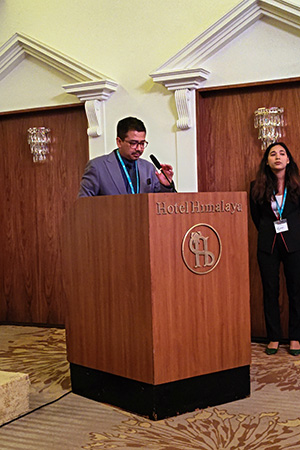

On behalf of JST, Dr. Hong Kean Ooi pointed out that there are almost 25,000 Nepalese exchange students in Japan, which accounts for over 10% of all international students. The first group of Nepalese students came to Japan as early as 1902, and Dr. Ooi remarked that “the spiritual legacy of those Nepali students from 121 years ago is also being reflected today in the Sakura Science Program (SSP).”
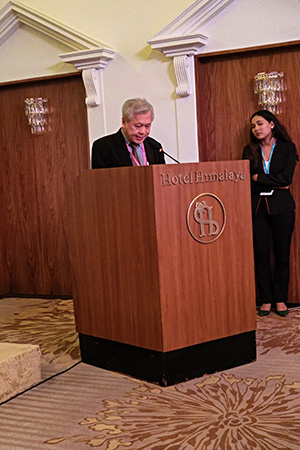
Next, His Excellency Mr. Yutaka Kikuta, Ambassador of Japan to Nepal, congratulated SSCN for finally meeting in person, and expressed his personal happiness to be attending with them. He praised the coordinators for forming SSCN voluntarily on their own initiative, giving valuable opportunities to future generations.
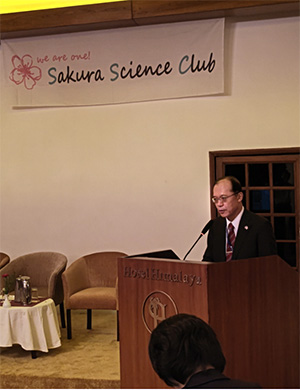
Assistant officer at Nepal's Ministry of Education, Science and Technology, Mr. Baral Kritan Raj, highlighted the strong diplomatic relationship between Nepal and Japan since 1956 and the benefits students have gained from SSP since 2014. He affirmed his Ministry's commitment to continue partnering with JST.
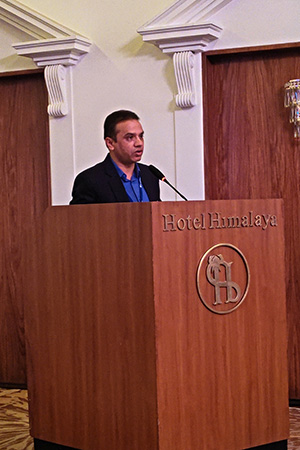
Professor Dinesh Raj Bhuju, who is the Executive Director of Mid-West University Institute of Cooperation and Development, and an Academician of the Nepal Academy of Science and Technology, as well as an Executive Member of the Japan Universities Alumni Association (JUAAN), spoke of his fond feelings for Japan, starting in his childhood through movies, music, and technology. He then shared his personal journey of studying in Japan under the prestigious MEXT Scholarship, emphasizing how this experience established him as a research scientist. He encouraged everyone to seize life-changing opportunities like SSP.

Sharing Session 1
Ms. Aneeta Thapa, Sakura Science Club Nepal Coordinator
Ms. Aneeta, a geology student at Tribhuvan University in Nepal, visited Japan for 10 days in early 2020. By showing the slides she made, she spoke fondly about the many firsts she experienced on her trip, such as walking by the beach and tasting sea water for the first time, as well as coming into contact with a lot of snow on the ground. It must be noted that Nepal is a land-locked country. The experiences she went through in Japan will stay with her for a lifetime, she said.
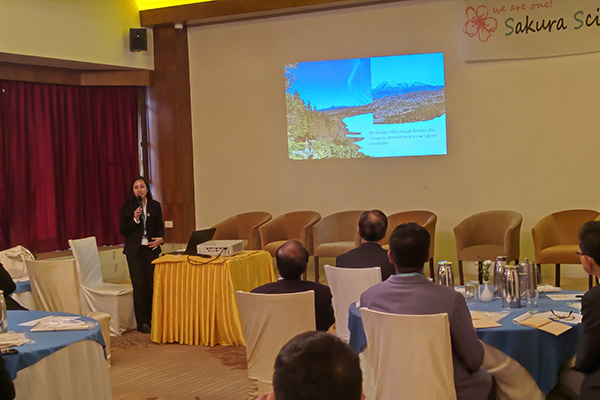
At Shimane University, she and her group members participated in seminars on topics including disaster mitigation, field excursion to see the Japanese engineering infrastructure that were designed to help save lives. Ms. Aneeta "realized the importance of international exposure" through these hands-on experiences and by having the chance to work with students and professors from various countries.
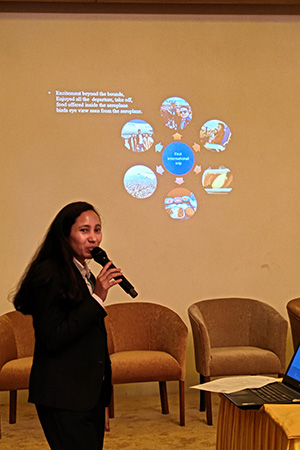
Sharing Session 2
Mr. Milan Kumar Rai, Sakura Science Club Coordinator
Mr. Milan traveled to Japan via SSP in 2018 to learn about disaster risk management. His 10-day SSP trip hosted by Kagawa University, was packed with technical learning and practical training experiences in a variety of disaster situations common to Japan and Nepal.
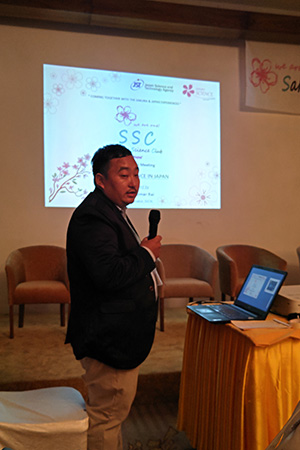
Through field research trips during the program, Mr. Milan learned about liquefaction and landform analysis, and then he and his group members were taken to the Median Tectonic Line in Shikoku and were shown how to identify sites of former landslides.
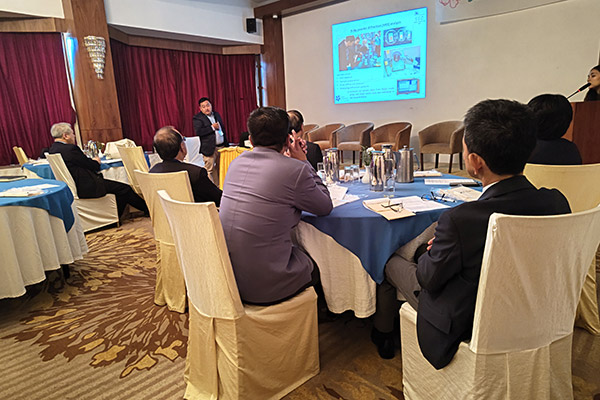
In particular, the visit to the Great Hanshin-Awaji Earthquake Memorial Museum convinced Mr. Rai that awareness and preparedness of the Japanese people is one of the key factors in reducing the loss of lives during disasters. Mr. Rai even suggested that establishing a memorial museum for Nepalese disasters may help convey the importance of disaster mitigation.
Sharing Session 3
Ms. Shreyasi Bhattarai, Sakura Science Club Nepal Member
Ms. Shreyasi, who is a high school student, passionately described how she and her fellow SSP batchmates interacted not only with Japanese students and teachers, but also with fellow students from South America, Taiwan, and Sri Lanka. She expressed gratitude for the lifelong friendships that they formed. She concluded that participants in programs like Sakura Science will create positive changes in the world.
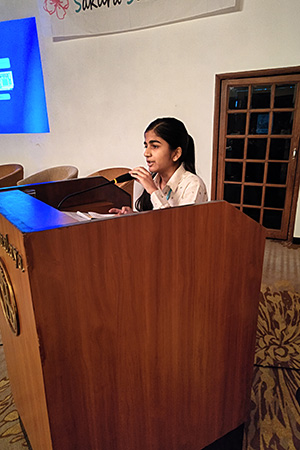
Sharing Session 4
Mr. Nemi Bhattarai, Sakura Science Club Nepal Member
On his SSP trip, Mr. Nemi was hosted by the Tokyo University of Science with six other students from India and Sri Lanka. They were able to study aerospace engineering, which included a visit to JAXA. His group visited a laboratory that specializes in space cameras and space debris. The students got hands-on experience with assembling and testing the cameras, and were also invited to observe real-time communication between the mission control room at JAXA and the Kibo Module on the International Space Station. Mr. Nemi hopes to use the knowledge and experience he gained for the betterment of Nepal.
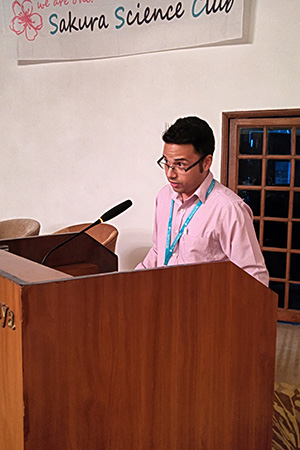
At the opening of Q&A, His Excellency Ambassador Kikuta, commented that this year, on September 1st, marks the 100th anniversary of the 1923 Kanto Daishinsai Earthquake. He pointed out that it is very important for Nepal need to share the awareness of disaster mitigation and prevention to its public. In this context, he also put forward a question on how this can be done through the activities of the SSC members.
JICA Nepal officer, Mr. Okubo Akimitsu also commented on how Japanese people are ingrained to prepare for disaster, having learned from the 1923 Earthquake which happened 100 years ago. “Japan continues to do research in this area, and such knowledge can be spread in Nepal through youths who participated in SSP,“ he suggested.
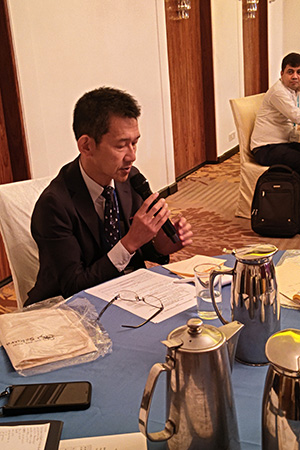
In the Q&A, one attendee asked how SSC members have worked to apply the knowledge they learned in Japan to Nepalese society. Many of the members work in geological fields, and they replied that they are able to apply the technical expertise they picked up in Japan to their current careers. Another attendee also suggested that it would be valuable to invite Japanese doctors to Nepal to share their knowledge, as they are highly capable of responding to disasters.
At the end of the event, SSCN Coordinator, Dr. Narayan Gaire, urged everyone to continue socializing with each other to further exchange information and ideas. Lastly, Dr. Ananta Dahal enthusiastically added that how his experience at Azabu University taught him a technique to create parasite-eggs counting microscope slides for a cost that is less than one of a ten thousand lower than buying a new one. He added that he continues to share the knowledge he gained in Japan with his students and colleagues in Nepal, and indeed called his time with the Sakura Science Program “a life-changing experience for me.”
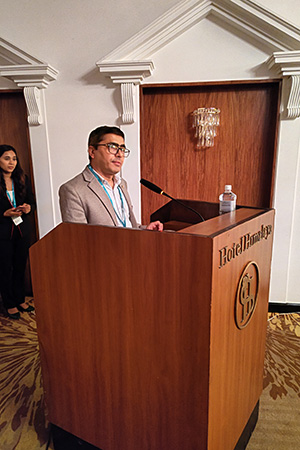
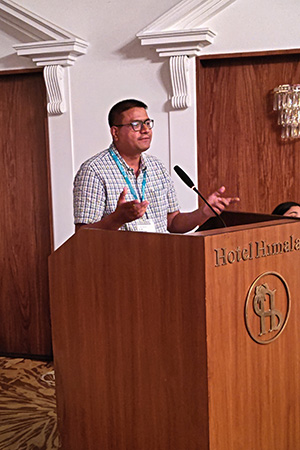
The SSC secretariat in Japan would like to thank all contributors and supporters, including our honorable guests who kindly attended the event in person. It is a great honor for us. Despite the pressing timeline, coordinators were able to host the event flexibly and efficiently to bring bout a very heart-warming reunion. As a related activity of the SSC, Dr. Ooi also delivered a lecture and conducted an extremely well-received on-site workshop for the veterinary students at the Himalayan College of Agricultural Sciences and Technology (HICAST), Kritipur, prior to the alumni event.
